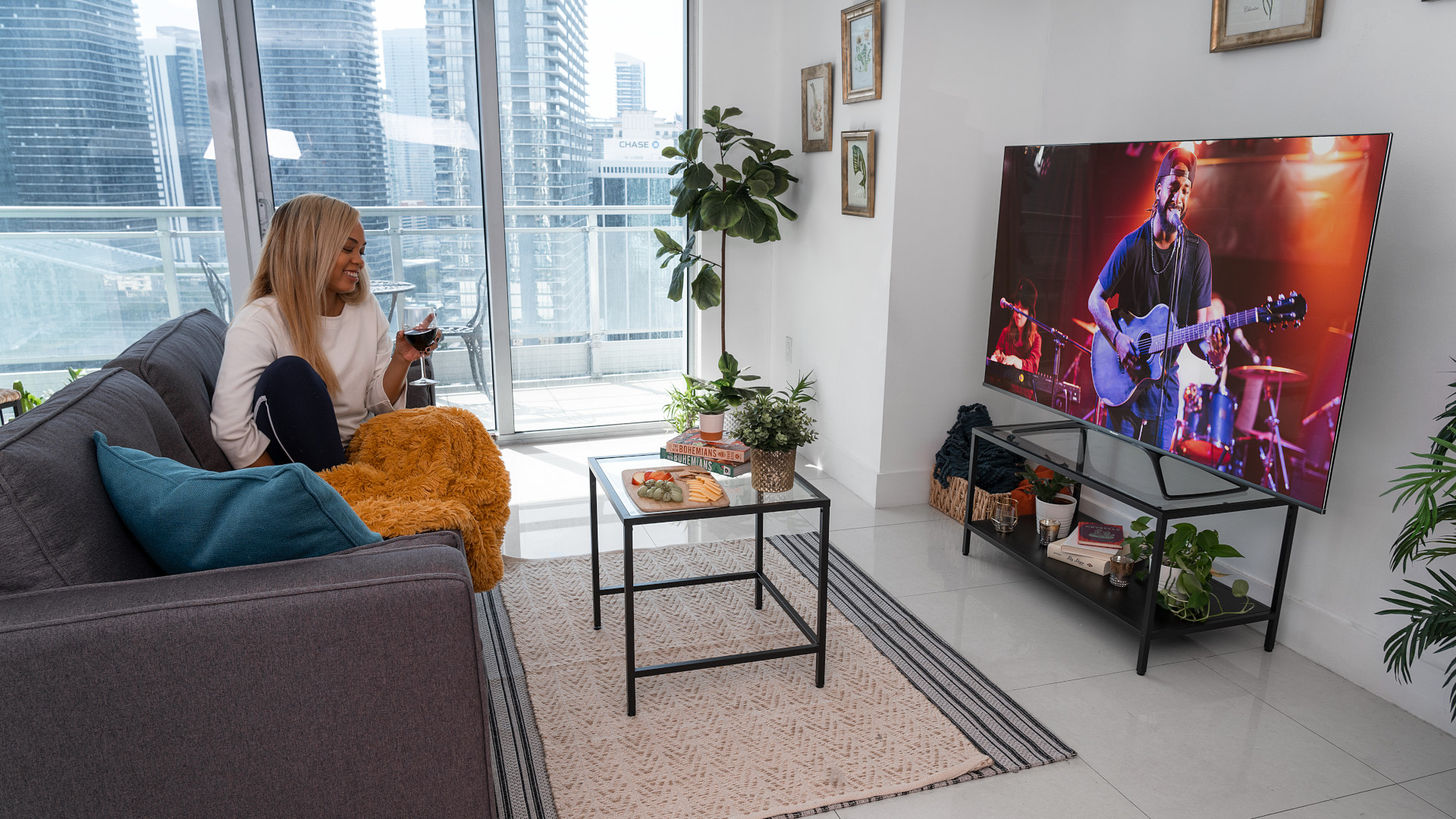TechRadar Verdict
Android TV may be a little slow, and the audio isn't great, but Hisense's high-value TV beats out the competition where it counts – image quality.
Pros
- +
Incredible image quality
- +
Google Assistant built-in
- +
Modern design
Cons
- -
Lackluster audio
- -
Android TV is slow
Why you can trust TechRadar
Hisense has surprised us with some stunningly high-quality TVs at ultra-affordable prices over the past year or so, thanks largely to the development of its new ULED tech, which combine elements of traditional LED TVs and newer quantum dot tech.
The latest model in Hisense’s ULED line is the Hisense H9F, and on paper, it has a lot going for it: With up to 132 local dimming zones, a modern design, and Android TV built right into it, this could be the TV to beat for under $1,000.
But in a world with the likes of Vizio and TCL making astounding low-priced TVs of their own, this once totally abandoned area of the television market is now a heated competition. Does the Hisense H9F rise above the rest? We’ve been testing it for a few weeks now to find out.
Price and release date
The Hisense H9F comes in two screen sizes – 55-inches and 65-inches – both of which are available to buy now from most major retailers. In terms of price, the 55-inch 55H9F is available for $599 while the 65-inch 65H9F comes in at $899.
For comparison, the rival Vizio M-Series Quantum comes in four screen sizes (43-, 50-, 55- and 65-inches) and starts at $349 for the 43-inch and goes up to $799 for the 65-inch version. There's also the TCL 6-Series QLED that comes in two screen sizes, 55- and 65-inches, that cost $599 and $899, respectively.
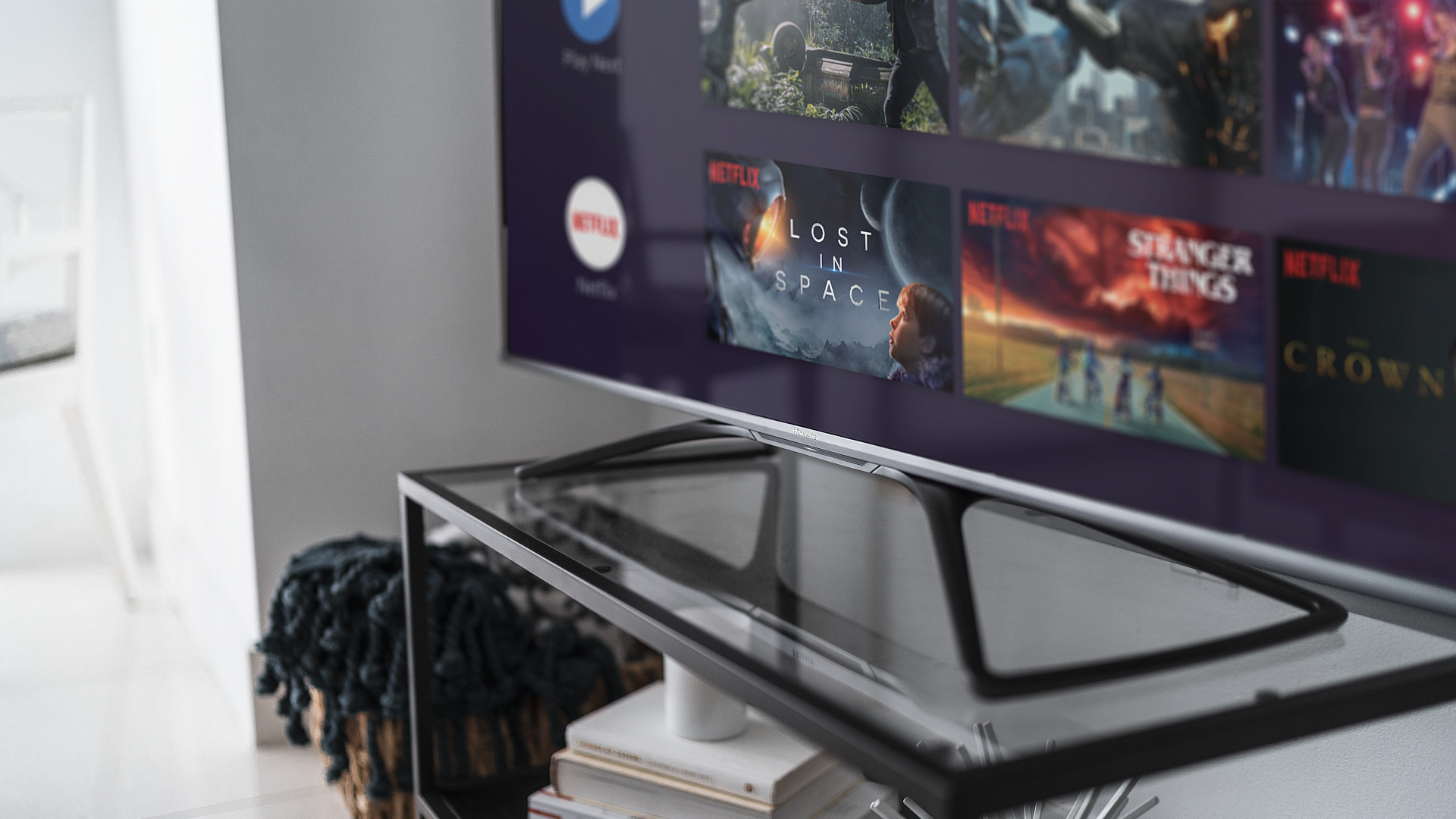
Design
The Hisense H9F offers a slightly more modern design compared to the lower-range Hisense H8F we reviewed earlier this year, and we quite like it. The TV now comes with classy-looking silver metallic legs with a unique design that spreads out to the side. More importantly, however, the legs seem to be sturdy, and there’s little wobble to speak of. The stand does have a pretty wide footprint, but it’s a lot less wide than some TVs that place individual legs towards each side.
The modern look isn’t just related to the legs – it also has to do with the relatively thin bezels around the top and sides of the display. The bezels are only a little more than a quarter of an inch thick, and while the bottom bezel is a little thicker, it doesn’t look out of place. The panel itself is thin too. At its thickest, towards the bottom of the TV, it comes in at around three inches – but at the top it’s a lot thinner, and it generally looks very slim considering the tapered design.
Port-wise, the TV is pretty capable. There are a total of four HDMI ports, including one with ARC, two USB ports for both power and local media, an optical output, a 3.5mm audio output, an ethernet port, and a composite input. With four HDMI inputs, you should be able to connect all your devices, including gaming consoles and external streaming players. With an Apple TV 4K, PlayStation 4, and Nintendo Switch, we had more than enough ports – and we’re betting most others will too.
We’re reviewing the 65-inch model of the TV, but it’s also available in a 55-inch model, which will be more appropriate for most small to mid-sized living rooms. Even as someone who regularly reviews large TVs, 65 inches can get a little unwieldy, so make sure to measure out your space before buying.
The remote that comes with the Hisense H9F is fine, but it looks dated in a world of ultra-simple remotes like the Apple TV 4K’s. The remote features everything you would need, including channel controls, software controls for Android TV, and a Google Assistant button, which is a nice touch. There are quick-access controls for some popular apps too, including Netflix, YouTube, Google Play, and Vudu. The remote generally worked fine, and you’ll get used to using it – even if it’s a little boring.
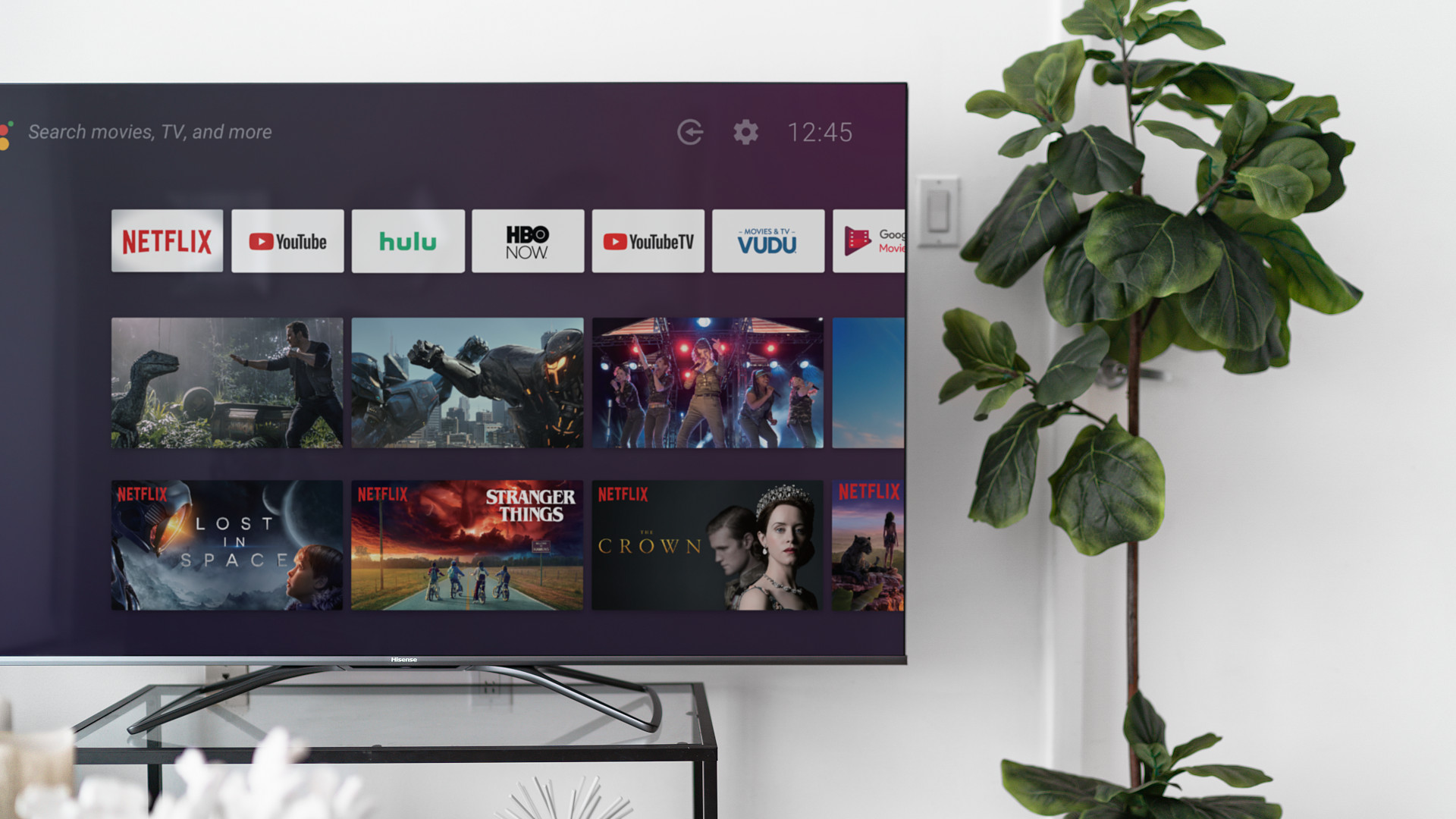
Smart TV (Android TV)
If you buy a Hisense TV, you’ll be getting a TV with one of two operating systems – either Roku, or Android TV. This is one of the Android TV models. For some, that will be good news – for others, the opposite.
While Android TV in general is a little divisive, it has gotten better over the past few years. Currently, Android TV is laid out with a row of apps at the top, and rows of content from each app below that. It’s not a bad setup, though there’s a lot to take in all at once. As you would expect from a major TV operating system in 2019, you’ll be able to download all your favorite streaming apps. Android TV, however, also benefits from the behemoth that is the Google Play Store, giving you access to plenty of apps that you may not find on platforms like Apple’s tvOS or Roku.
On anything that’s not the Nvidia Shield TV, Android TV can be slow to respond and unresponsive, and that continued to be the case here. While Android TV on the Hisense H9F wasn’t as bad as it has been on some other TVs, we think all Android TV manufacturers need to start taking higher-power processors more seriously if they want customers to have a decent smart TV experience. Lag was particularly bad with Google Assistant. We got used to having to wait a second or two before speaking when pressing the Assistant button, but the whole point of Assistant is to be helpful and responsive, and often we ended up navigating to apps and content manually over using Assistant. It’s also important to note that it wasn’t always slow – at times, it seemed to speed up and offered a much better user experience. That was especially true after the TV had been on for a few minutes.
The benefits of Android TV may outweigh the downsides for you. Features like Google Cast and integration with your Android phone are handy to have. While slow, Google Assistant is still just as smart – so if you’re plugged in to Google’s ecosystem, Android TV in general is a great way to go.
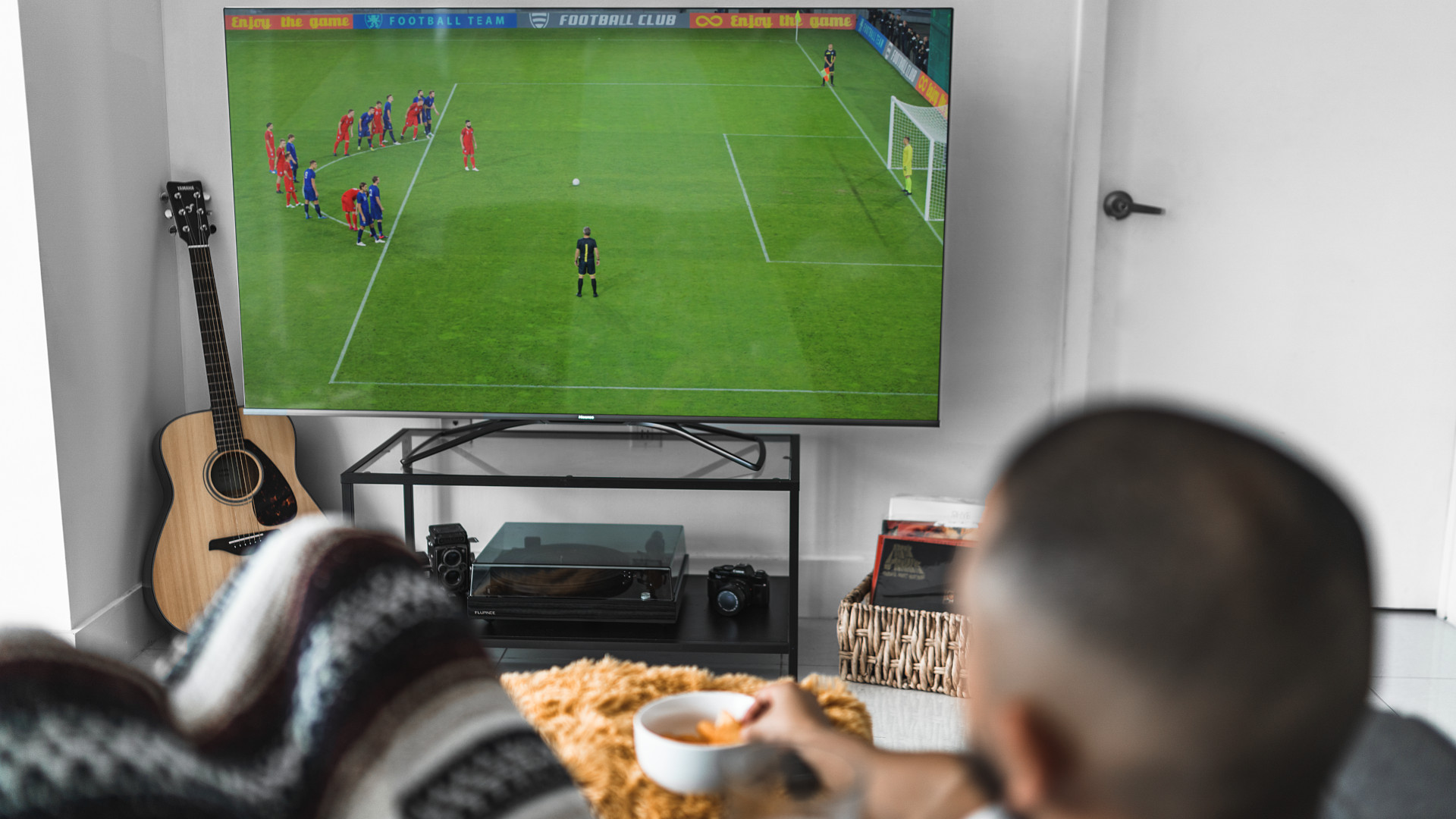
HD/SDR Performance
The slow smart TV platform is the worst thing about the Hisense H9F, but the image quality is by far the best. Considering many may end up using another streaming device anyway, image quality is also the most important thing to consider – and this TV delivers.
Generally speaking, the Hisense H9F was able to deliver an excellent image quality while watching HD and SDR content, though as with any TV, you may want to play around with the settings a little. There are a range of picture modes on offer here, including Vivid, Standard, Energy Saving, Theater Day, Game, Sport, and Theater Night. Vivid was a little overly exposed for our liking, and we ended up keeping the TV on Standard most of the time. Thankfully, there are manual settings too, so if you want to adjust things on a more granular level, like contrast and brightness, you can.
Generally, the TV was able to upscale HD and SDR content to look quite good. We happened to be watching through The Office for the tenth time during this review, and noticed that the TV offered generally vivid colors and detailed images, without any major visual artifacts or other issues. Sure, you won’t get an image on par with watching 4K or HDR content, but we found that the TV was able to upscale content better than any other we’ve tested in this price range.
Black levels while watching SDR content was better than most too. Again, the theme here is you can get better if you spend more – and OLED panels will deliver deeper blacks. But the Hisense H9F was able to deliver deeper black-levels than similarly-priced models, and almost no blooming, which is more than most models in this price range can say. Even compared to some of the lower-end Samsung QLED models, like the Samsung Q60R, black-levels on the Hisense H9F are impressive.
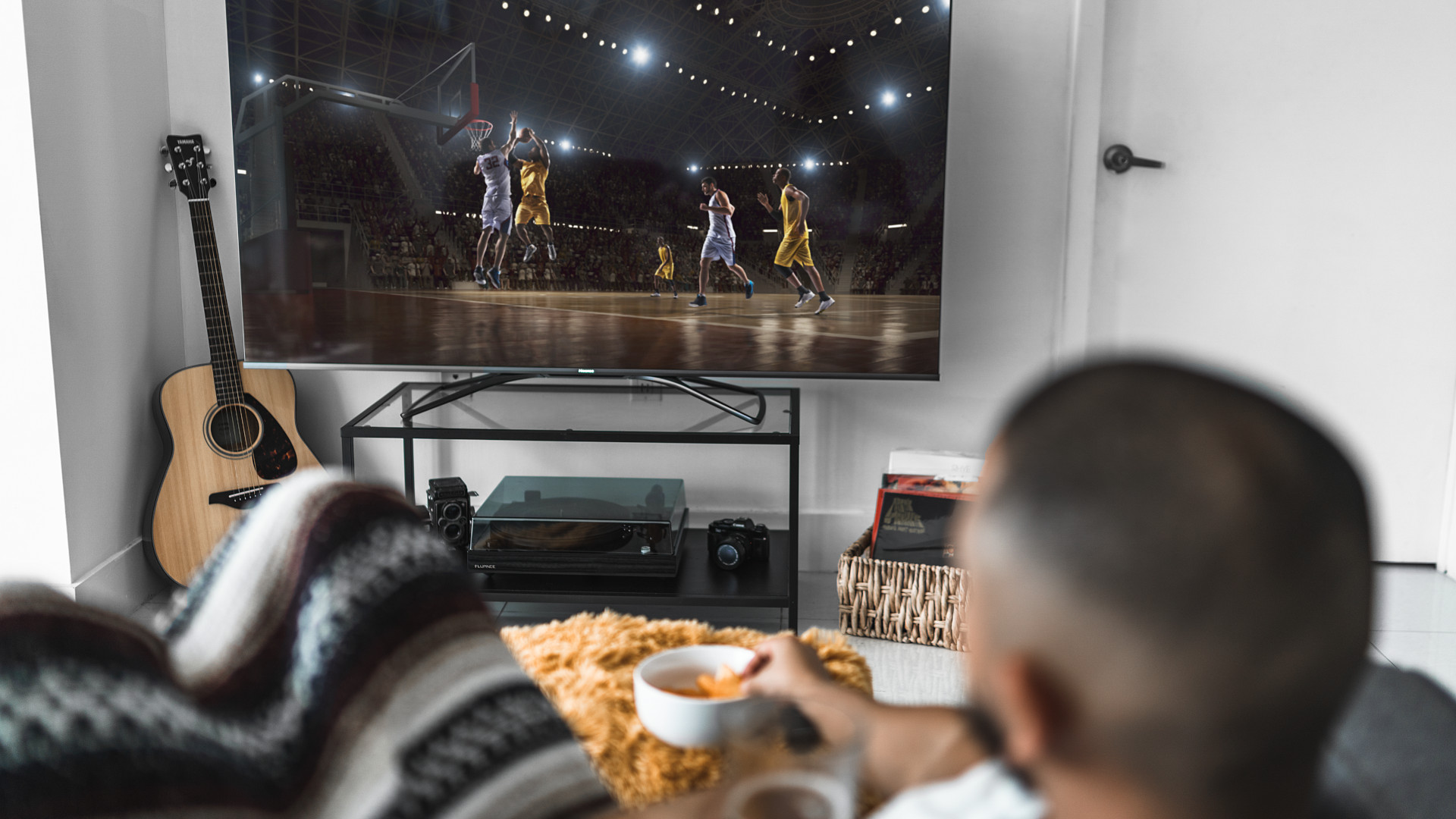
4K/HDR Performance
If it wasn’t already clear, we were pretty impressed with the TV’s image quality while watching HD and SDR content. Switch over to 4K and HDR content, however, and things are even better. The TV offers HDR10 and Dolby Vision support, so most modern content that you watch will be supported.
Viewing modes are the same as while watching SDR content, but optimized for HDR. So, you’ll get a “HDR Vivid,” “HDR Standard,” and so on. Interestingly, the TV seems to default to HDR Theater – even when we had the mode set to Standard while watching SDR content, it still switched to HDR Theater for HDR content. HDR Theater actually ended up being our favorite image mode for HDR content. We did see some banding when displaying similar colors, but it wasn’t bad at all – and barely noticeable except to the trained eye. It’s also not as bad as others in this price range.
In HDR, colors are beautifully vibrant and black levels are ultra-deep. OLED panels are known for their deep blacks, but Hisense has spent a ton on its ULED tech, and it really shows here.
Motion smoothing was pretty good on this TV too. Many prefer to simply turn it off, but we found that it looked pretty good here, as long as it’s tamed. There are a bunch of motion smoothing settings you can play with, but we ended up switching between Standard and Off presets. Some like it, some hate it, and on this TV you’ll be able to do what you want with it. Where it was appropriate, motion smoothing definitely helped make for clearer, more detailed action scenes and plays while watching sports.
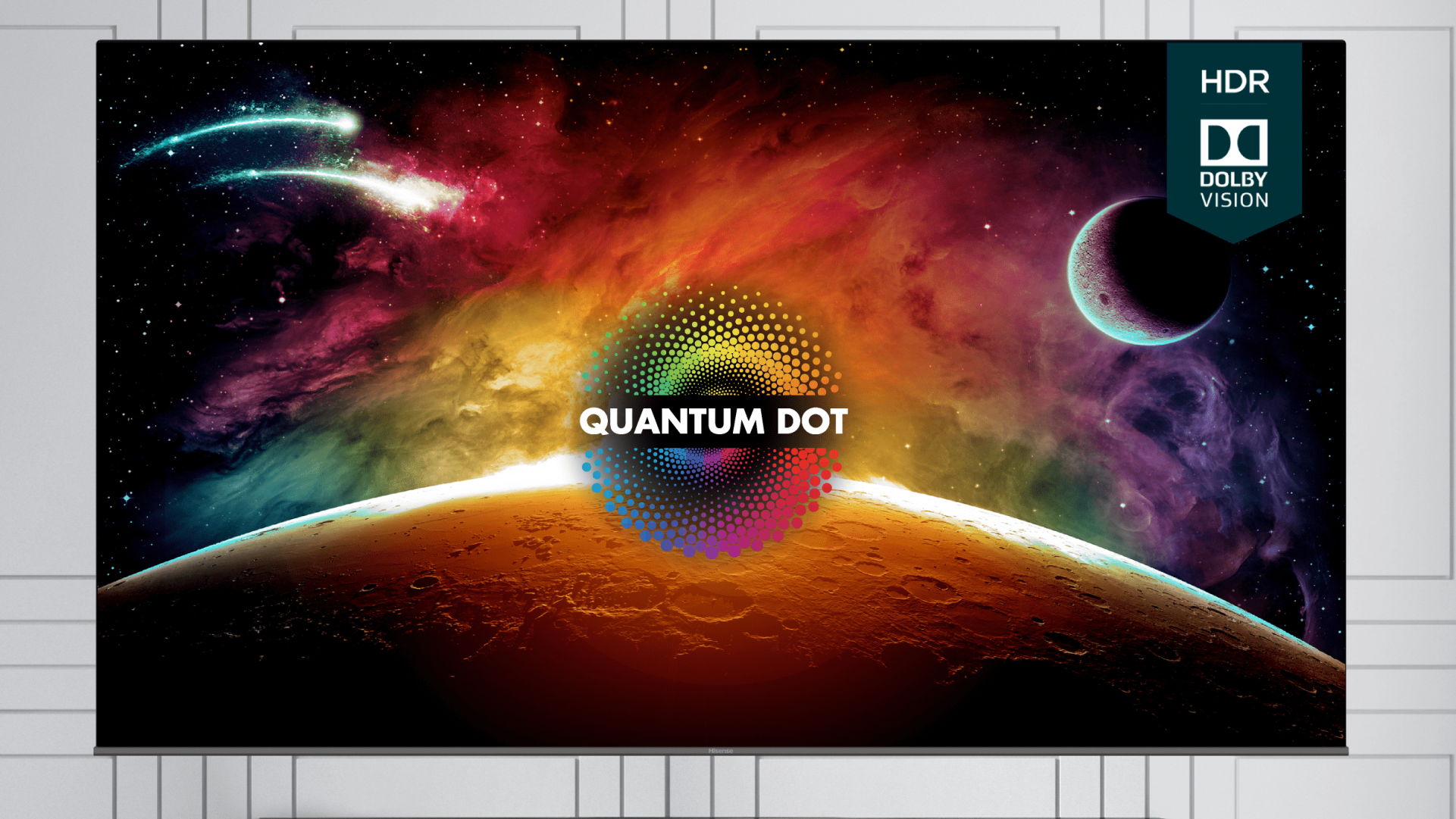
Sound
What the Hisense H9F offers in the audio department isn't great. If your budget is maxed out after buying the TV itself, the speakers built into the TV will do the job just fine, but don’t expect a ton of depth or detail here.
The bass response on the speakers is a little limited. When it comes to things like explosions, engines, and kick drums in music, the sound generally feels thin, and lacks the oomph that most will want from their audio experience.
The mids are disappointingly tuned, too, and the low mids are there, to be sure, but they’re overshadowed by boosted high mids that make the speakers in general sound a bit cheap. That’s common on TVs, cheaper speakers, and cheap headphones, but it’s still something to note.
The area that suffers most is the high end. Detail is limited, and that’s especially apparent when listening to music. Again, it’s not so-bad-you-can’t-bear-it, but as someone with a background in audio, I limited my time listening to the speakers when I had to for this review, and switched over to an audio setup during downtime. If you can afford it, we think you’ll want to do the same.
The saving grace is that they can get pretty loud. We think the speakers will be able to pump out more than enough volume for the vast majority of situations, and we almost never went above 50% for fear of disturbing the neighbours. When we did crank it up, there was a little distortion at higher volumes, but that’s to be expected.
Verdict
The Hisense H9F is an absolute home run from the company. While not perfect, the TV is awesome where it counts – image quality. We really want to see a better Android TV experience on TVs like this, but Google probably deserves the blame as much as TV manufacturers there. The speakers on this TV are also a little lackluster.
With a pair of decent speakers and an Apple TV 4K, this thing really shines: Colors are bright and natural, blacks are deep, and upscaling is as good as it gets for a TV in this price range.
If you care about speedy software and decent built-in TV sound, then the Vizio M-Series will likely be a better option for you. From the standpoint of image quality, however, the Hisense H9F is the king of this price range.
- Expect to see this on our list of the best TVs
Christian is a writer who's covered technology for many years, for sites including Tom's Guide, Android Central, iMore, CNN, Business Insider and BGR, as well as TechRadar.
